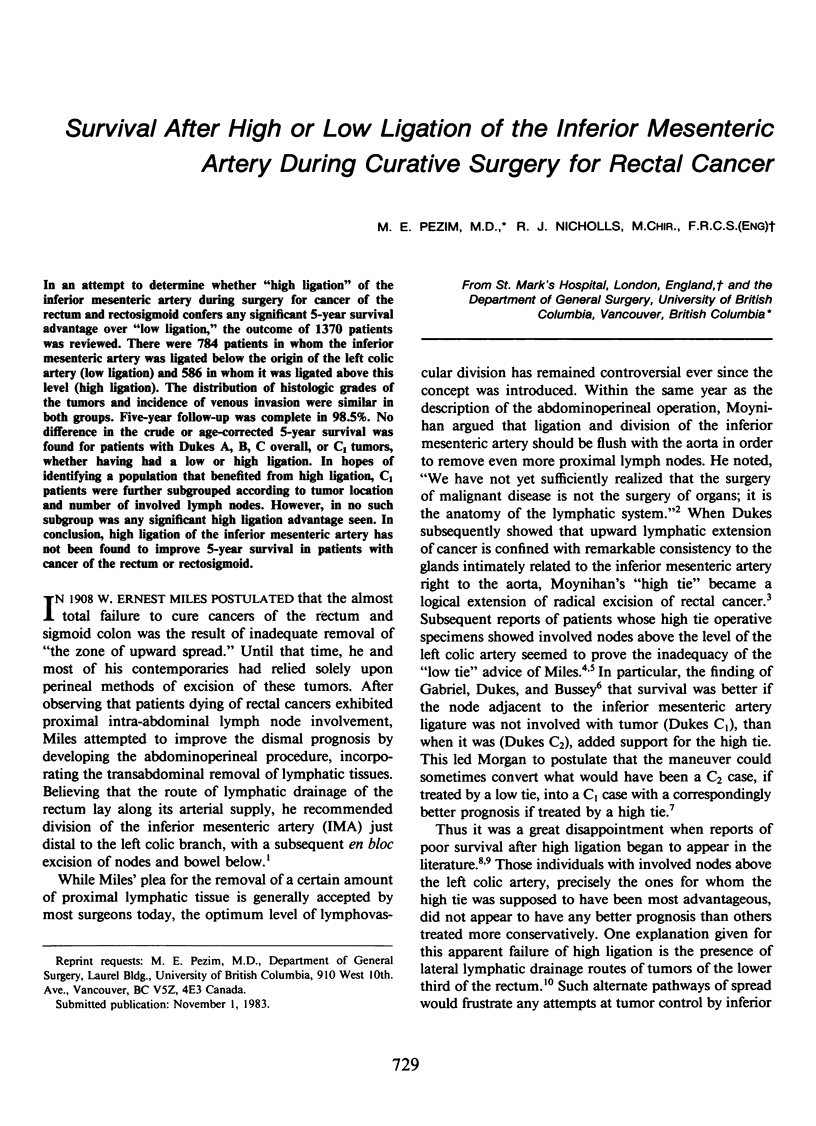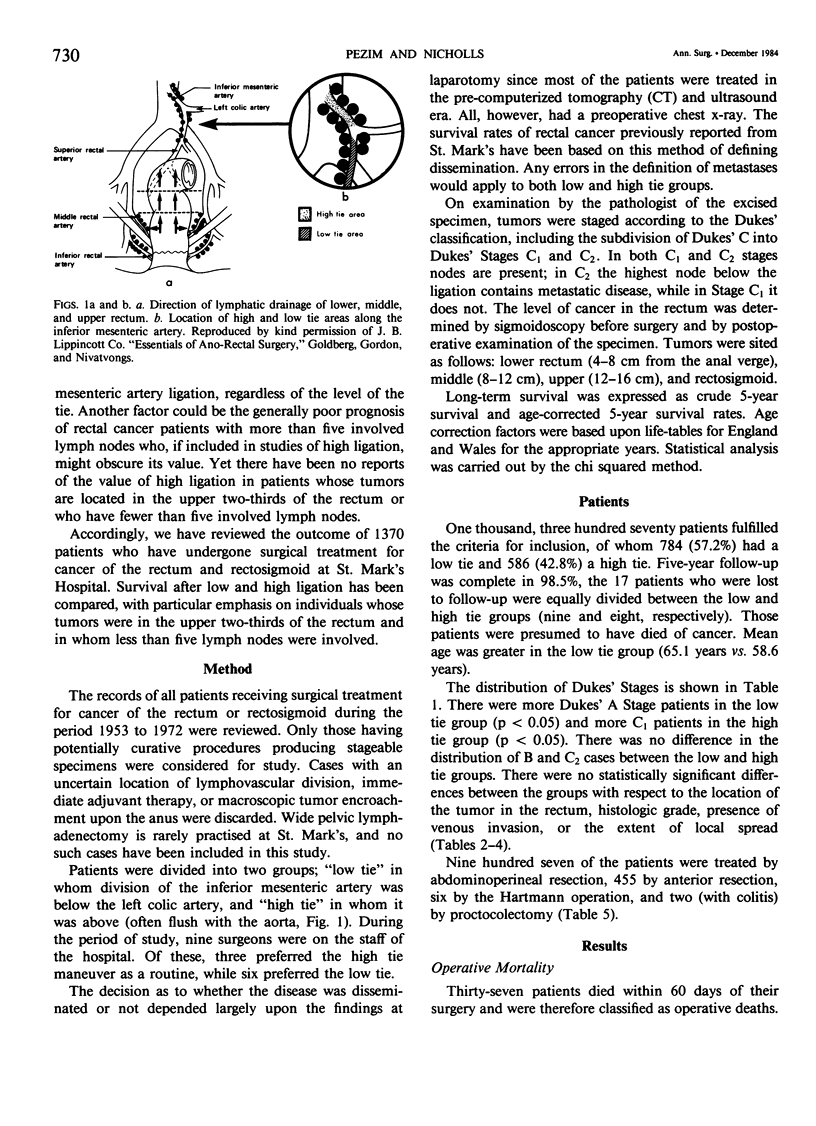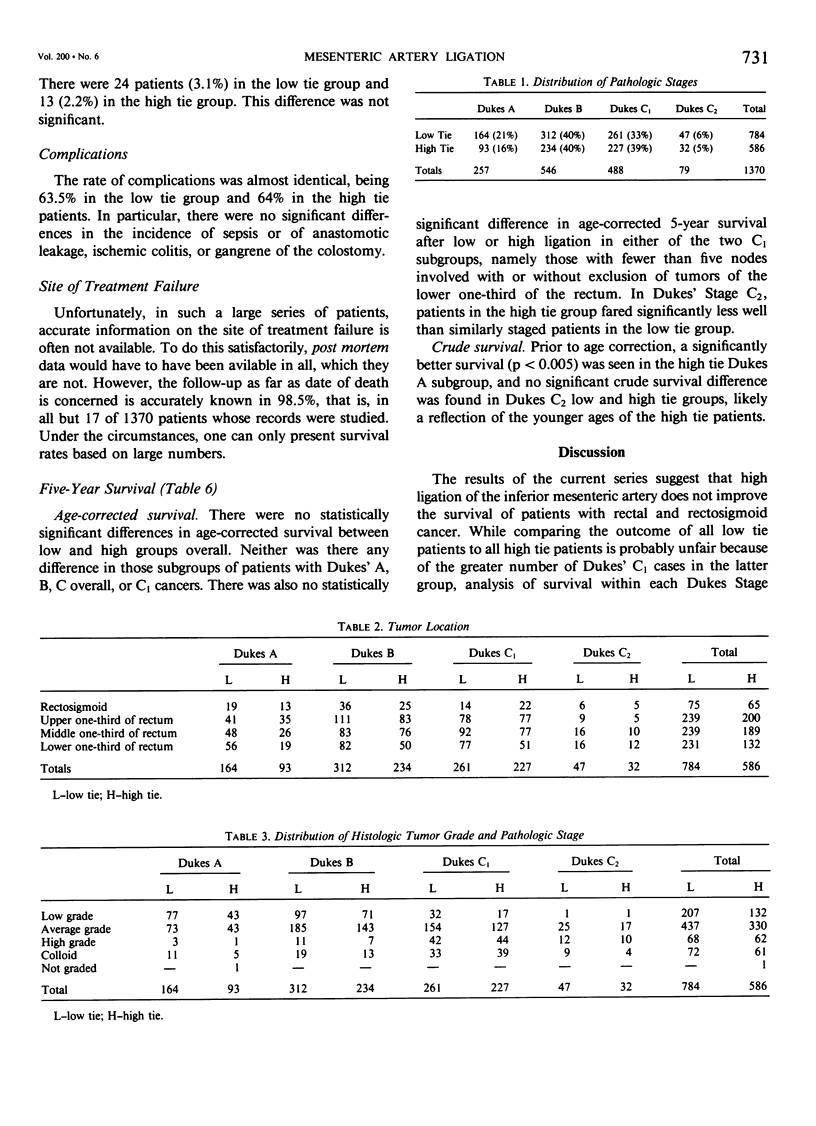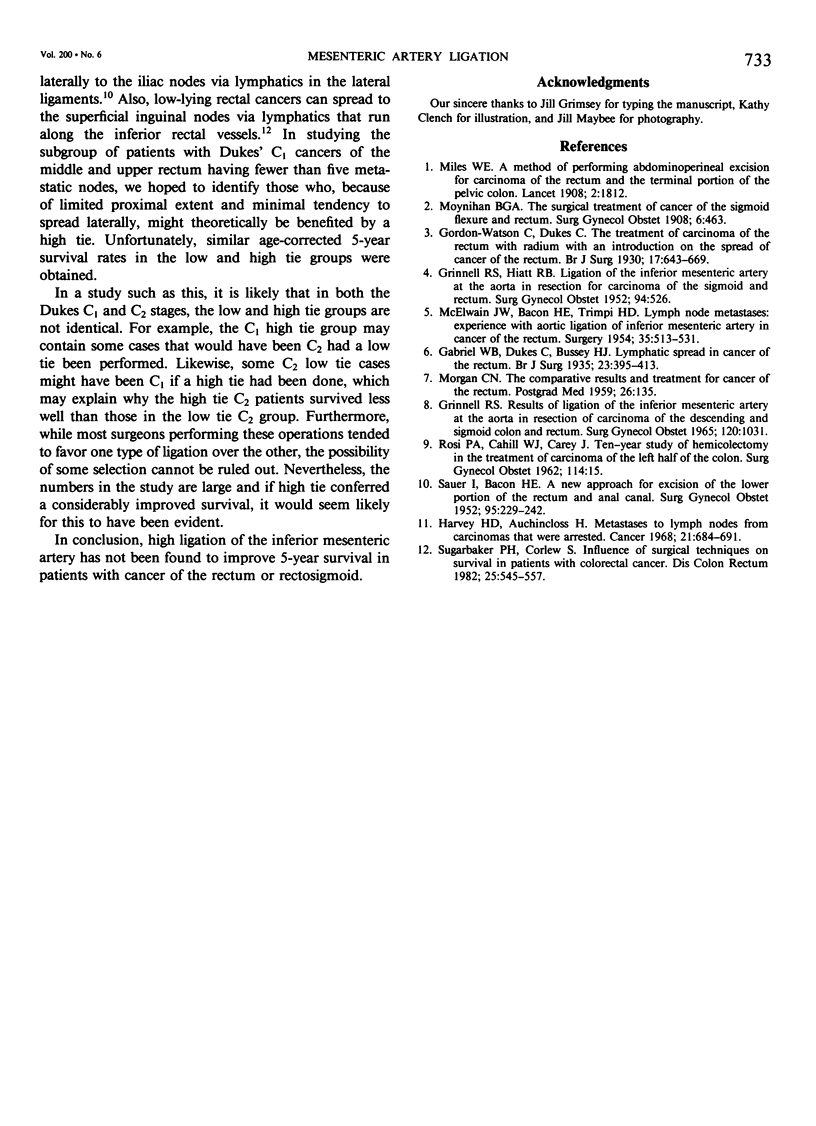Abstract
In an attempt to determine whether "high ligation" of the inferior mesenteric artery during surgery for cancer of the rectum and rectosigmoid confers any significant 5-year survival advantage over "low ligation," the outcome of 1370 patients was reviewed. There were 784 patients in whom the inferior mesenteric artery was ligated below the origin of the left colic artery (low ligation) and 586 in whom it was ligated above this level (high ligation). The distribution of histologic grades of the tumors and incidence of venous invasion were similar in both groups. Five-year follow-up was complete in 98.5%. No difference in the crude or age-corrected 5-year survival was found for patients with Dukes A, B, C overall, or C1 tumors, whether having had a low or high ligation. In hopes of identifying a population that benefited from high ligation, C1 patients were further subgrouped according to tumor location and number of involved lymph nodes. However, in no such subgroup was any significant high ligation advantage seen. In conclusion, high ligation of the inferior mesenteric artery has not been found to improve 5-year survival in patients with cancer of the rectum or rectosigmoid.
Full text
PDF




Selected References
These references are in PubMed. This may not be the complete list of references from this article.
- GRINNELL R. S., HIATT R. B. Ligation of the interior mesenteric artery at the aorta in resections for carcinoma of the sigmoid and rectum. Surg Gynecol Obstet. 1952 May;94(5):526–534. [PubMed] [Google Scholar]
- GRINNELL R. S. RESULTS OF LIGATION OF INFERIOR MESENTERIC ARTERY AT THE AORTA IN RESECTIONS OF CARCINOMA OF THE DESCENDING AND SIGMOID COLON AND RECTUM. Surg Gynecol Obstet. 1965 May;120:1031–1036. [PubMed] [Google Scholar]
- Harvey H. D., Auchincloss H. Metastases to lymph nodes from carcinomas that were arrested. Cancer. 1968 Apr;21(4):684–691. doi: 10.1002/1097-0142(196804)21:4<684::aid-cncr2820210420>3.0.co;2-r. [DOI] [PubMed] [Google Scholar]
- MORGAN C. N. The comparative results and treatment for cancer of the rectum. Postgrad Med. 1959 Aug;26(2):135–141. doi: 10.1080/00325481.1959.11712555. [DOI] [PubMed] [Google Scholar]
- McELWAIN J. W., BACON H. E., TRIMPI H. D. Lymph node metastases; experience with aortic ligation of inferior mesentery artery in cancer of the rectum. Surgery. 1954 Apr;35(4):513–531. [PubMed] [Google Scholar]
- ROSI P. A., CAHILL W. J., CAREY J. A ten year study of hemicolectomy in the treatment of carcinoma of the left half of the colon. Surg Gynecol Obstet. 1962 Jan;114:15–24. [PubMed] [Google Scholar]
- SAUER I., BACON H. E. A new approach for excision of carcinoma of the lower portion of the rectum and anal canal. Surg Gynecol Obstet. 1952 Aug;95(2):229–242. [PubMed] [Google Scholar]
- Sugarbaker P. H., Corlew S. Influence of surgical techniques on survival in patients with colorectal cancer. Dis Colon Rectum. 1982 Sep;25(6):545–557. doi: 10.1007/BF02564164. [DOI] [PubMed] [Google Scholar]


